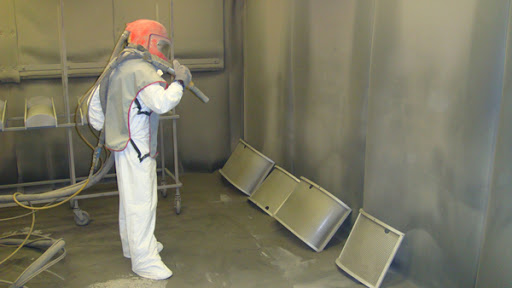Which Cleaning Method Is Best? Dry Blasting OR Wet Blasting
However, you are aware of sandblasting but if we are going to narrow it into more categories, you might get confused. There is basically dry and wet sandblasting, and you must know the difference between them.
Both wet and dry sandblasting methods are highly used for different applications and witnessed good results. What is the material that you want to sandblast? You should know this so you could easily choose the accurate sandblasting type.
Wet blasting is consumed when you have to deal with explosive or flammable materials. The water always prevent dust away during the sandblasting process. The water in the process is enough wet to make the process smooth.
Due to its wet nature, the process is less harsh. On some hard materials, it doesn’t work efficiently for that, and you have to move towards dry blasting.
Dry Blasting VS Wet Blasting
Both blasting process have different advantages, the fundamental difference that you can spot by their name. One is with water, and the other is without water.
Dry Blasting
Dry basting lets many components get cleaned instantly and accurately. From paint removal to surface layering, dry blasting is a perfect choice for various industries.
Process of Dry Blasting
There are two standard methods, one is suction feed, and the other is pressure feed. In the suction feed, an air compressor is used for compressed air. It helps in absorbing blast media from the tank of the cabinet to the blast gun. It also works for mobile media blasting. It is then moved towards the surface of the item being treated.
Dry blasting also helps in the preparation of metal components for coating like paint. However, with the pressure feed, blast media is stored in the vessel exposed to high pressure. This also touches the blast gun; when you apply it correctly, it cleans better than suction.
Benefits
You can bring your certain things back to life through dry blasting. There is no water used in this process it is highly recommended for the materials that are not water tolerant. It contain abrasives commonly used for paint removal and rust efficiently.
● Competent and fast results.
● Can be cleaned by the media
● Save metals from rusting.
Wet Blasting
When compressed air, water, and abrasive media combine to attain expected finishing results on your surface, the process is called wet blasting. There are many professionally designed, wet blasting technologies that helps to clean different components.
Process of Wet Blasting
The process starts with glandless polyurethane pump push water and media into a mud form. It is contained within a close sink. Transfer the mud form in the blast vent through a glandless polyurethane pump and linked hoses inside the machine.
The mud form is tapped at approximately 2 bar by the nozzle and then compressed air helps stimulate the mud form that cleans your component.
Later, the mud form flows back into the sink by the recirculating system. Residue media and other pollutants are passes through the sediment filters position at the end of the cabinet.
Benefits
The main advantage of wet blasting is that it finishes your product with the massive flow of water exhibits abrasive. It gives an excellent coating due to the flowy action of the water.
● No dusty process
● Good flow of water cleans everything
● Concurrently decrease and cleans blast
● Waterworks as the medium between media and components
● Longer media life is promoted
● Gives a softer finished look
Conclusion
Wet and dry blasting are abrasive cleaning methods that include moving particles with high speed to eradicate the rusty, contaminants, and coatings.
If you are not sure which one is the best cleaning method, now you are well aware of this and can make a wise decision. Many experts manufacture advanced and leading dry and wet sandblasting tools for all your sandblasting related problems.
If you want to differentiate them and go for one fine, then know your requirements. Know the difference and opt for the best cleaning—all you need to have sound knowledge and the right advice at the right time.



Comments
Post a Comment